TOURISM AND CULTURE - NAPLES
Naples is one of the richest cities in the word in terms of cultural resources and number of monuments, which give testimony of its historic-artistic development. Its great artistic and architectural heritage is under UNESCO protection, whose board in 1995 included Naples historical center in the UNESCO Human Heritage with the following justification: "One of the most ancient cities in Europe, whose contemporary urban pattern preserves the elements of its rich history. It's roads layout, the richness of its historical buildings characterizing different epochs give the site a universal value with no equals, which had a profound influence in the European panorama and outside it." On a relatively small territory one can find, among others, a large number of castles, royal residences, palaces, churches and historical remains of the classical age, as to make the city of Naples, an open-air museum. Although rich of evidences of the past, Naples is also a laboratory and an important international showcase of contemporary art. Very active in this respect are the PAN - PALACE OF ARTS OF NAPLES and the Contemporary Art Museum Donnaregina (MADRE). More recently, were born "STATIONS OF THE ART", where the city's subway stations, are not conceived as transit spaces, but as a real exhibition space with works by world famous artists. This page, more than a guide, wants to be a hint of some of the major sites of historical and cultural interest that the city of Naples can offer.
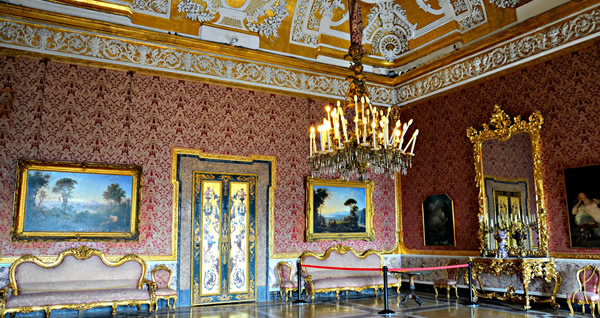
Palazzo Reale
The original design by Domenico Fontana dates back to 1600. The oldest rooms on the first floor, now the Museum of the Historical Apartments, conserve the furnishings of royal families. The Teatro di Corte, the splendid Hall of the Ambassadors, the Throne Room, the Hall of Hercules and the Palatine Chapel. Hours Open 09.00 - 20.00 Closed On Wednesdays Ticket Office It closes one hour before closing time
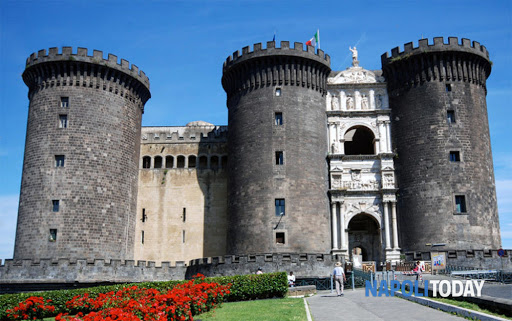
Castel Nuovo - Maschio Angioino
The building of the Castel Nuovo, also called Maschio Angioino, began in 1279 under the reign of Charles I of Anjou, on the basis of a plan by the French architect Pierre de Chaule. The strategic position of the new castle gave it the characteristics not only of a royal residence, but also those of a fortress. The castle is today the venue of cultural events and also houses the Municipal Museum.
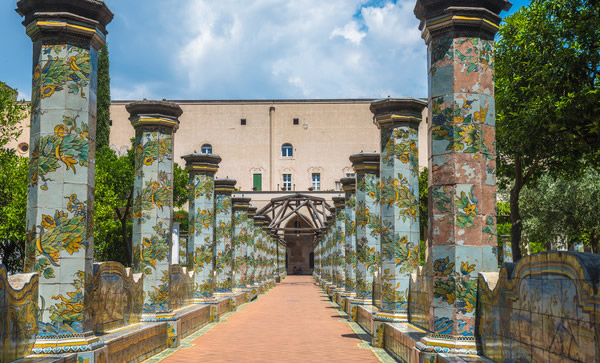
Santa Chiara
The Monumental Complex of St. Chiara, including Church, Monastery and Convent, was built from 1310 to 1328 at the behest of the monarch Roberto D’Angiò and his wife Sancia di Maiorca. The sovereigns, both devoted to St. Francesco d’Assisi and St. Chiara, wanted to build a Franciscan citadel supposed to host in the monastery la Clarisse and in the adjacent convent to the Friars Minor. Located in the historic center of Naples in S. Chiara, near Piazza del Gesù, the complex unfolds within the Franciscan citadel and includes the Opera Museum, the Archaeological Area, the Majolica Cloister and the Hall of the Nativity of the '70s.
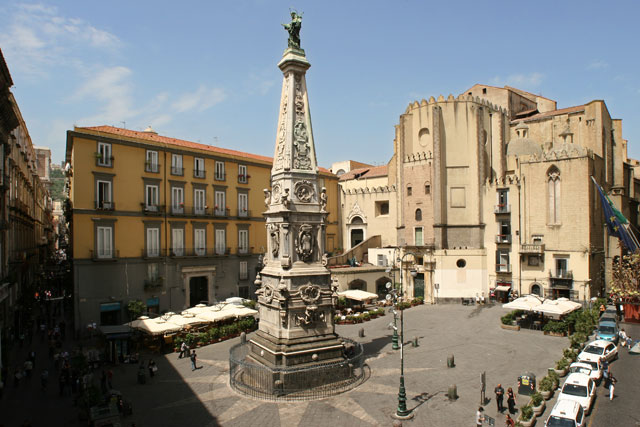
San Domenico Maggiore
Built between 1283 and 1324 for will of the Angevine Charles II, the Dominican complex took over a pre-existing church of the X century. After the earthquakes of the XV century the church was restored many times, more radically in the Baroque epoch by Domenico Antonio Vaccaro that changed the former gothic shapes. The inside has a latin-cross plan with three naves on gothic arches with side chapels. The floor dates back to the seventeenth century with geometrical patterns and marble stripes, made by Vaccaro. The interior of the church is full of paintings, among which works of Pietro Cavallini, Francesco Solimena and Tommaso De Vivo and many sculpture works among which the main altar made by Cosimo Fanzago. The Sagrestia’s vault, decorated with stucchi and fringes, includes a fresco of Solimena (1709).
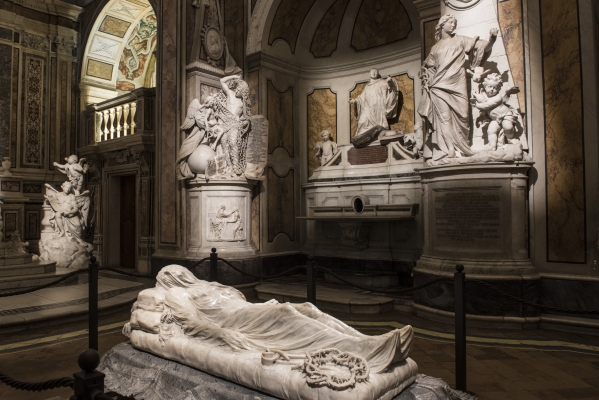
Museo Cappella Sansevero
The Sansevero Chapel Museum in the historic heart of Naples is a jewel of the world’s artistic heritage. With its masterpieces such as the famous Veiled Christ, renowned world over for the remarkable tissue-like quality of the marble, feats of virtuosity such as Disillusion, the Anatomical Machines, the Sansevero Chapel is one of the most impressive monuments that the human mind has ever conceived.
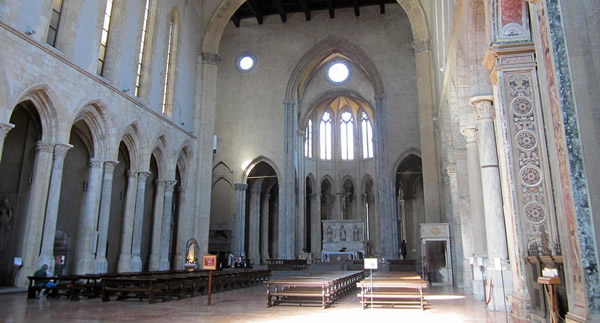
San Lorenzo Maggiore
San Lorenzo Maggiore is one of the oldest churches in the city, dating from the twelfth century, represents the most important Gothic church in Naples. French architects made the apse of the church, the first part to be build in the church, considered unique in Italy and classic example of French Gothic style. Adjacent to the church there are the halls of the convent church housing the museum of the same name.
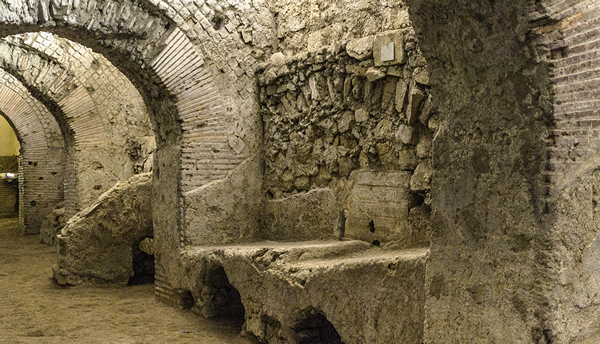
Area Archeologica del complesso di San Lorenzo Maggiore
Below the basilica there is a real buried city: form the cloister, down some steps, you can reach two Roman roads (a hinge and a cryptoporticus) with its shops: a commercial area buried, throughtout the centuries, by mud, and perfectly preserved. In the back of the area, a tub of Greek age shows how this Roman market had risen in correspondence of the oldest greek market. The archaeological site, where you can see the remains of the Foro di Neapolis, is the most important archaeological site in the historic center of Naples. Via dei Tribunali 83/84 Hours: Mon - Sat 09:30 to 17:30 Sun 09:30 to 13:30

Duomo di Napoli
Dedicated to Our Lady of the Assumption, even if commonly to San Gennaro, the Cathedral was built by Charles II of Anjou towards the end of the 13th cnetury. The Duomo was re-arranged various times. The façade was restored with its current pseudo-gothic shapes byb E. Alvino and later modified by Pisanti. Hosted inside the Duomo, the cappella del Tesoro di San gennaro, famous all over the world for the miracle of the liquefaction of the blood, represents the heart throbbing of the Neapolitans religiosity. During the centuries, the art works of great artistic value show the worshippers’ devotion. Unique, for its historical, artistic and cultural value, is the silver collection, that represents only part of San Gennaro’s treasure.
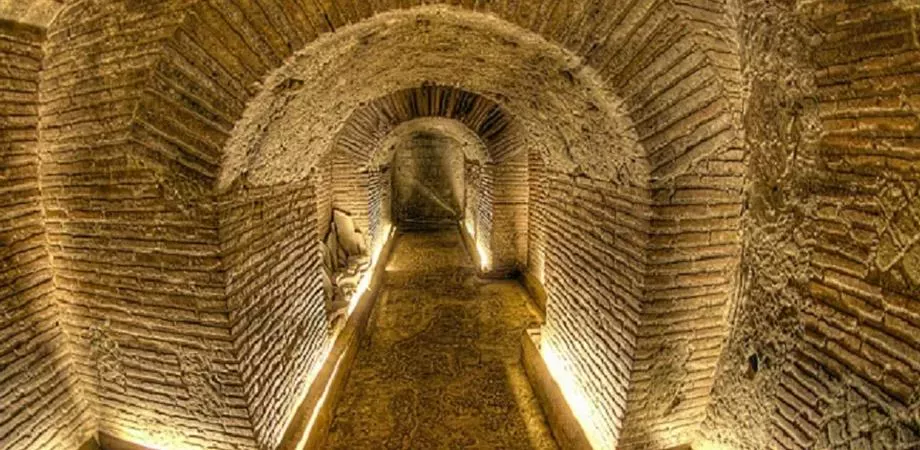
Napoli Sotterranea
Fourty meters below the characteristic and lively streets of the Historic Center of Naples, you find a different world, unexplored, isolated by time, but deeply connected with the world above. It’s the heart of Naples, and the place from which the city was born. To visit it is to travel to the past, a world 2400 years old. To have further informations you can: visit us in Piazza San Gaetano 68 – Naples phone: (+39) 081 29 69 44 mobile: (+39) 340 46 06 045 (Vodafone) mobile: (+39) 334 81 97 912 (Tim)
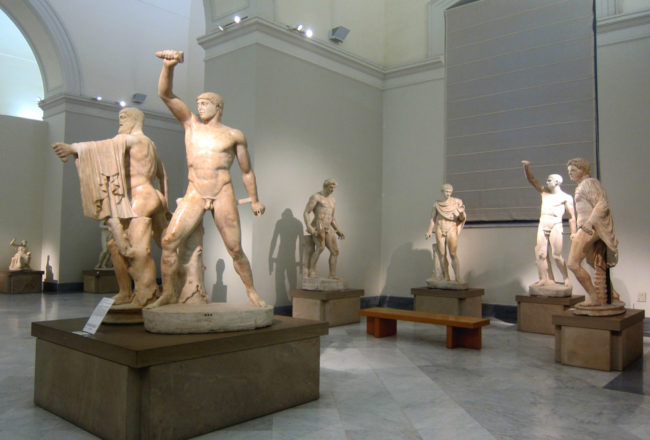
The National Archaeological Museum of Naples
The National Archaeological Museum of Naples is not merely one of the most remarkable collections of ancient exhibits in the world; its galleries house historical collections which can justly claim to be a cornerstone of Italian cultural history. Hours 09.00 - 19.30 Closed On Tuesday,1 January,1 May, 25 December Ticket Office closes one hour before closing time
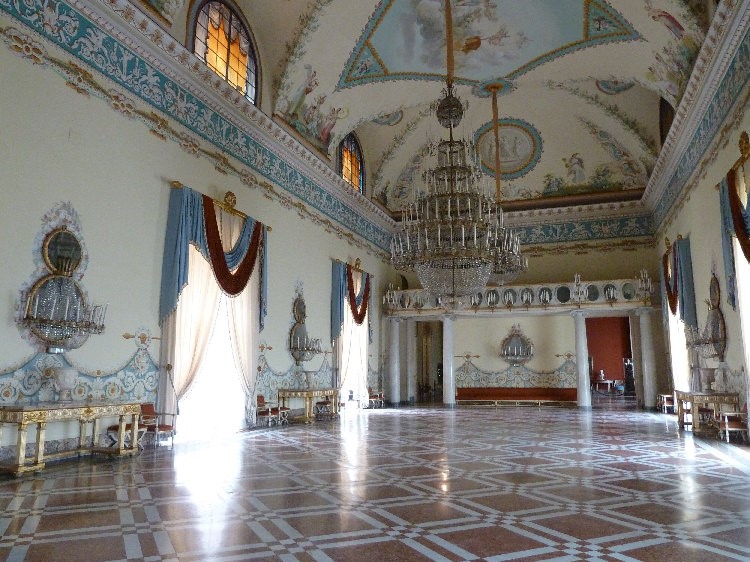
Museo di Capodimonte
Visit one of the most important Italian museums with treasures from the Farnese and Borbone collections. The museum preserves a series of paintings coming from Neapolitan churches, among them two Caravaggio masterpieces. Enjoy the park and gardens of this former hunting “lodge” - and the magnificent view of Naples and surroundings! Hours from 8:30am to 7:30pm The museum is closed on Wednesdays, as well as on January 1, and December 25. The ticket office closes one hour before museum closing.
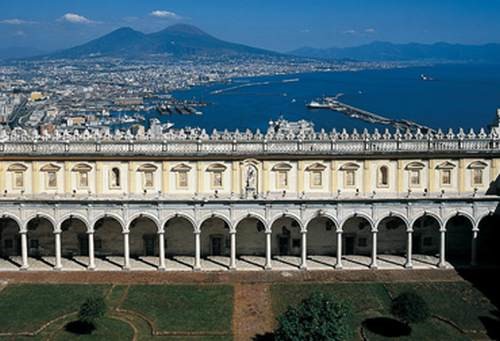
Certosa e Museo di San Martino
The Neapolitan monastery, dedicated to Saint Martin, bishop of Tours, was founded in 1325 at the behest of Charles, Duke of Calabria and son of Robert of Angiò. The enormous structure was designed by the Senese architect Tino di Camaino and by Attanasio Primario who followed closely the architectural canons of the Carthusian order to which the monastery belonged and the rules laid down by its founder, Saint Bruno of Cologne. Between the end of the 1500s and the 1600s the whole monastery was completely transformed at the hands of several artists. Only the subterranean parts have retained their original form and they now houses the section of the museum dedicated to sculpture. In the ancient kitchens one can also find the "Sezione presepiale" which houses models of the nativity scene of Christ. From both the museum and the monastery it is possible to enjoy spectacular views over the Bay of Naples. Hours 08.30 - 19.30 Closed On Wednesday Ticket Office closes one hour before closing time
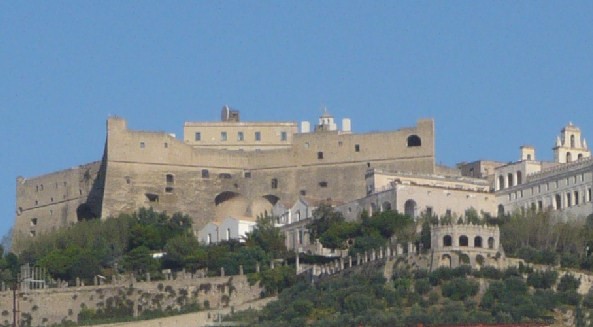
Castel S. Elmo
The first mention of the imposing fortified structure which dominates the city of Naples from high on the nearby hills dates from 1275 when the fortress was the seat of the family of King Charles of Angiò. In 1329 Robert of Angiò decided to enlarge the fortification and commissioned the Senese architect Tino di Camaiano to head the project. Between 1537 and 1547 the castle was reconstructed by the viceroy Don Pedro of Toledo and here it took its particular star shaped structure with six points. It became a compact and strong castle which protected the city under the auspicies of Pedro Luis Escrivà of Valencia, one of the periods most noted military architects. The castle is particularly well suited as it offers breathtaking views of the city and Bay of Naples. Hours 08.30 - 19.30 Closed On Tuesday 1 January, 1 May, 25 December Ticket Office closes one hour before closing time
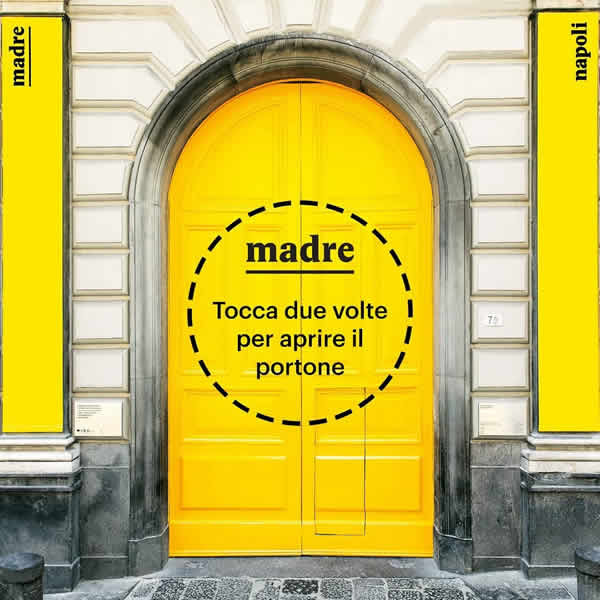
M.A.D.R.E.
MADRE is the first museum of Contemporary Art located in the historic centre of a city. The Portoguese architect Alvaro Siza has transformed the old Donnaregina palace into a splendid functional modern space for contemporary art. Hours 10.00 - 19.30 Monday, Wednesday, Thursday, Friday and Saturday. 10.00 - 20.00 Sunday Closed Tuesday Ticket Office closes one hour before closing time

Pan | Palazzo delle arti di Napoli
PAN's mission is to differentiate and multiply cultural stimuli for Neapolitans and visitors, and to serve as a multi-purpose artistic and cultural hub with a European outlook. In addition to putting on regular exhibitions in the prestigious rooms of Palazzo Roccella, PAN runs a programme of conferences, literary events with writers and essayists, workshops for children, film seasons and a great deal more. .

Stazioni dell'arte della metropolitana di Napoli
The city administration has transformed the simple and unattractive Metro stations of Naples into fascinating places where citizens can meet contemporary art while benefiting the public transportation service. The interior spaces of the Line 1 and Line 6 host around 200 works by 100 contemporary artists. A museum distributed across the entire city that allows the area to get a new value and international fame. In 2012, the station Toledo, Toledo Street, designed by the Spanish architect Oscar Tusquets Blanca was elected "the most beautiful Metro station in Europe".
